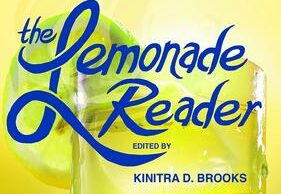Poems by A.D.
Selections from BITCH/BITCH
7
Cutting / the rot
The sweet red / hole
Gelatinous / flesh
holy / of holies
My son / the conqueror
A hole / in the earth
Lion of / judah
don’t / hit me
Lion of / judah
I long for / the mother
Reaping / the dead wheat
Lacerate / the red
My chest / heaves death
gathering / the wheat
My mother / dies
Counting / the seeds
I wanted / so much
for her
Seasons / change
My mother / is dead
4
jeanne / my sister / saw
the heart / pierced / in three
julian / my sister / saw
the crown / the godhead / dripping
i saw / the swords / the heat
pearls / in / their eyes
i dreamt / of christ / the cross
holo / graphic / on
the shore / the ocean / the
blood / and water / he wept
for my / return / i begged
him please / let me / combine
let me / end / the martyr
dom / afflicted / militant
grief
we / forgive / it we
forgive / it all
i / forgive / it i
forgive / it all
____
A. D. is a Catholic poet, artist, and media critic.
Artist Statement:
Emulating the tradition of Christian mystical poetry, BITCH/BITCH is a series of 10 poems, religious revelations written from and informed by the perspective (or positionality) of a sexually androgynous Catholic woman. In this way, the series explores how systems of belief are affected by positionality, and are ultimately mediated by a larger ideological superstructure. Though interested in the overall ideological context, the principal focus of BITCH/BITCH is gendered oppression, vis a vis the stigmatization of gender non-conformity, ritualized humiliation, the sex industry, internalized misogyny, and biological control. The poetry intentionally evokes conceptual oxymorons to this end, by way of parallelism and juxtaposition: erotic language coincides with religious concepts; natural and pastoral symbols are conflated with the technological; saints parallel commodities. Traditional poetry/memoir (e.g. George Herbert, St. John of the Cross, Julian of Norwich) is used to inform more radicalized ideas (e.g. Christ as gender non-conforming, a la Norwich’s Christ as mother). Overall, it addresses religious pathology: women are more readily barred from the religious/mystical narrative, not only on the institutional level, but psychosocially, vis a vis the social experience of exploitation and oppression. The work seeks to reconcile religious poetry with this experience, and challenge the notion of who is entitled to narrate.




0 comments